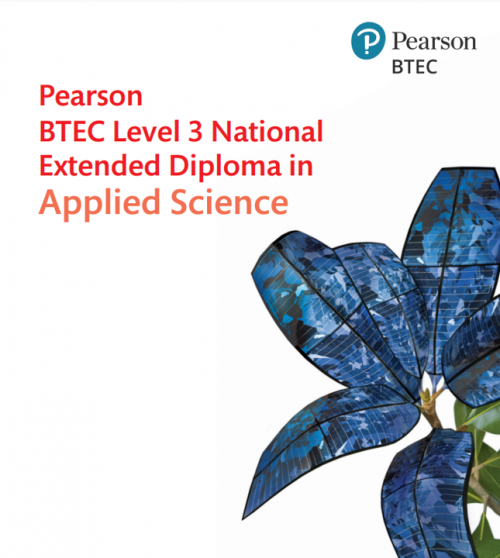BTEC Applied Science

Our resources can support you to teach the Applied Science BTEC. We have highlighted suitable activities and resources for content covered in selected Mandatory Units and Optional Unit 16 as well as for promoting Careers Skills.
- All our Activities use real data to teach concepts in physics and astronomy.
- Our Learn section is a trusted source of knowledge for a wide range of science and space topics.
- The robotic Liverpool Telescope can be used for telescopic night-sky observations.
- We have a video guide on how to take advanced observations through Go Observing.
Mandatory Units
Unit 1C: Waves in communication
- Activity: Measure the speed of light - includes content covered in C1 and C3
- Resource: Waves Learn pages
Unit 5C: Thermal physics, materials and fluids
- Activity: Design A Telescope
- As the NRT progresses, we will be adding more materials-based activities.
Unit 6: Investigative Project
- NSO Learn is a trusted online source of information.
- Go Observing and LTImage can be used to collect, collate and analyse data.
- NSO Research Projects can be used for reference
Unit 7: Contemporary Issues in Science
- Activity: The Space Debates - introduce learners to discussion about science topics.
Optional Unit 16: Astronomy and Space Science
A: Understand the Fundamental Aspects of the Solar System
- Quiz: Solar System
- Resource: Electric Orrery
- Resource: Solar System Learn Pages
- Resource: Space Probe Learn Pages
A1: Features and Characteristics of the Sun
- Activity: Solar Rotation
- Activity: Sunspots
- Resource: The Sun Learn Page
A2: Features, Characteristics and Relationship Factors of the Earth and Moon
- Activity: Moonsaic
- Activity: Lunar Craters
- Activity: Measure Mountains on the Moon
- Quiz: The Earth, Sun and Moon
- Resource: Earth, Sun and Moon Learn Pages
A3: Features and Characteristics of the Inner and Outer Planets
- Activity: Kepler's Laws
- Activity: Jupiter's Day
- Activity: Speed of the Planets
- Quiz: The Order of the Planets
- Resource: Planets Learn Pages
A4: Features and Characteristics of other Solar System Objects
- Activity: Hunting for Asteroids
- Resource: Asteroids Learn Pages
- Resource: Comets Learn Pages
- Resource: Dwarf Planets Learn Pages
B: Undertake measurement and observation of astronomical objects
The robotic Liverpool Telescope can be used for telescopic night-sky observations.
B1: Earth-based Telescope Design and Features
- Activity: Designing a telescope (Student Worksheets and Teaching Guidance)
- Quiz: Telescopes Quiz
- Resource: Telescope design and features
- Resource: Optics Learn Pages
- Resource: Earth-based Telescope Learn pages
B2: Space-based Telescope Design, Features and Observatories
- Quiz: Telescopes Quiz
- Resource: Space-based Telescope Learn pages
B3: Night-sky Mapping and Observations
- Activity: Planning Observations (Student Worksheets and Teaching Guidance)
- Activity: Seeing Workshop - links to refractive index
- Activity: Counting Stars
- Resource: Night Sky Learn Pages
- Use Go Observing to image moons of Jupiter
- Use Go Observing to image rings of Saturn
- Use Go Observing to image phases of Venus (this astronomical event occurs less often)
B4: Daytime Observation
- Activity: Make a Sundial
- Resource: Eclipse Learn Pages
- Resource: The Moon Learn Pages
C: Investigate the Essential Factors Involved in Space Flight
- Quiz: Rockets Quiz
- Quiz: The Apollo Missions
- Resource: Space Exploration Learn Pages
- Resource: Satellites Learn Pages
D: Understand the Fundamental Concepts Outlined in Astrophysics and Cosmology
D1: Principles of Star Creation
- Quiz: Stellar Evolution Card Match
- Resource: Stars Learn Pages
D2: Principles of the ‘Death’ of Stars'
- Activity: Life Cycle of Stars (Student Worksheets and Teaching Guidance)
- Resource: Stars Learn Pages
- Quiz: Pair the Stages of a Star
- Quiz: Order the Stages of a Star
- Quiz: Identify the Nebula
D3: Observable Characteristics and Properties of Stars
- Activity: Comparing Stars - includes HR Diagram (Student Worksheets and Teaching Guidance)
- Activity: Stellar Spectroscopy
- Activity: Make Your Own Spectroscope
- Independent Project: Star Clusters - includes HR Diagram
- Resource: Stars Learn Pages
- Resource: Maths Learn Pages
D4: Origin and Theories of Evolution of the Universe and Astronomical Dimensions
- Activity: Big Bang - short introductory practical
- Activity: Hubble Flow - use real galaxy data to work out the Hubble Constant
- Activity: Weighing the Universe - reinforces need for standard index notation
- Activity: Barnard's Star - includes parallax method
- Resource: Maths Learn Pages
- Resource: Galaxies Learn Pages
- Resource: Cosmology Learn Pages
Skills and Careers
- Activity: Careers in Space (Student Worksheets and Teaching Guidance)
- NSO Careers Pages

